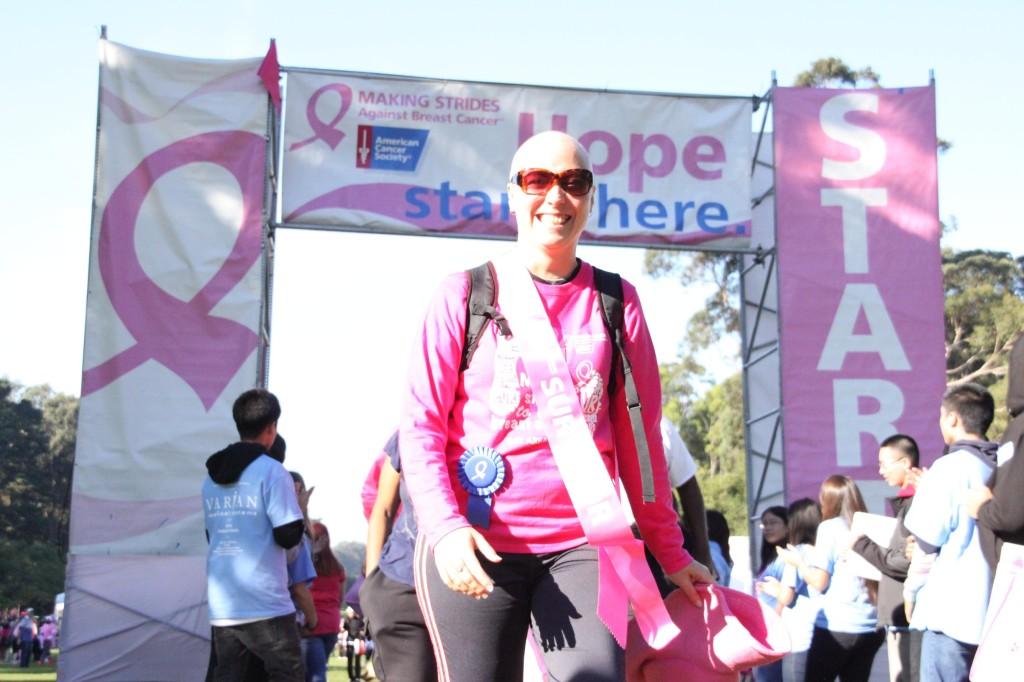Once a dirty word, breast cancer now finds itself rolling off the tongues of the public language as pink culture proves to be the trending social movement of the moment.
Events stressing the importance of breast cancer awareness have grown and expanded across the nation.
Awareness has crossed over from advocacy groups, to teen clothing suppliers, to pink wristbands worn by NFL linebackers.
“Back in the seventies [breast cancer] wasn’t discussed at all until Betty Ford talked about her struggle with breast cancer,” said Margaret Stauffer Vice President and Program Director at the Cancer Support community San Francisco Bay Area.
Although awareness has gained popularity, talking about the disease can still arouse strong emotions among cancer survivors.
“It’s really difficult to say the words, to say you have breast cancer,” said Pam Taylor of Concord, a breast cancer survivor. “It’s not necessarily a death sentence, most people survive with it now.”
Taylor stressed that surviving breast cancer is more than just not dying and that optimism helped in the ordeal. “Where else can you get a boob job and a tummy tuck covered by insurance?” said Taylor about her mastectomy.
Research by the University of Oregon released in August examined more than 30 years of cancer registry data.
The study showed that advocacy efforts had improved screenings for breast cancer and its discussion.
“So much has changed from 1987 when only 30 percent of women reported having a mammogram,” said Katheryn H. Jacobsen, associate professor of epidemiology at George Mason University, who worked on the study. “Communities come together…and screenings among the target group increased to 70 percent in 1999.”
Over the weekend, thousands of people gathered for the American Cancer Society’s “Making Strides against breast cancer” walk in San Francisco.
Students from Crocker Middle School organized fundraising efforts to support their teacher, Stephanie Newblanc, who was just diagnosed with breast cancer in July.
“I learned about [Newblanc’s] breast cancer and wanted to get the school involved,” Maddy Schilling, 13 said. Maddy, along with the other students, raised over $15,000.
“We’re here so we can find a cure…I don’t want to be here 20 years from now supporting my students,” Newblanc said.
The keynote speaker at the event, Dr. Kim Mulvihill from CBS5, spoke about the importance of community involvement in improving research.
“People are out here walking for their daughters and their granddaughters,” Dr. Mulvihill said. “Until we find a cure, we need to prevent it so we don’t have to treat it.”
Making Strides wasn’t the only national event to highlight breast cancer.
The Hard Rock Café in San Francisco held the kickoff event for the walk the night before as part of their Pinktober fundraising.
Bands Bobby Jo Valentine and Welcome Matt played pro bono to help bring in crowds and donations for breast cancer research.
Not all of the national events that partook in fundraising efforts this month were completely concerned with breast cancer awareness.
Organizations like Susan G. Komen for the Cure are concerned with the statistic that 1 out of every 8 women will get breast cancer in their lifetime.
Nordstrom on the other hand focuses its concerns with helping them adjust to changes after surgery.
“We want to give a fun, normal shopping experience. The alternative is shopping in a medical supply store,” Harp said about helping to maintain a normal lifestyle for cancer survivors.
“We have certified fitters that fit for women who have had a mastectomy or lumpectomy year round.” Harp said. One of the customers appreciated the specialized services. “It’s the only department store that does this,” said Molly, who declined to give her last name. “I had a mastectomy.”
Awareness has also sparked local grass roots fundraising.
In Martinez, Bubbles for Boobies was put on by the Friends of Faith Foundation.
The foundation honors Faith Fancher, a reporter for KTVU2 who passed away due to breast cancer.
“Everyone has been touched by breast cancer,” said Sean Andrade, who helped organize the event. All of the proceeds from the event go to helping low income women in the Bay Area who lack resources.
Noel Meza, who attended the event, said “men should be involved too, realize this can happen to a guy as well.”
One of the more evident examples of breast cancer awareness hitting the mainstream is the “I heart boobies” bracelets worn often by teens.
“We probably sell 5-10 a day, mostly to kids in middle school,” said Kyle Rose, assistant manager at Tilly’s in Walnut Creek.
“Most don’t realize what it’s for, they just want something that says boobies on it,” he said.
But still wearing and seeing the bracelets helps awareness says the Keep-A-Breast Foundation that creates the bracelets.
“If a kid buys [a bracelet] simply for the slogan, someone will mention it and it will create conversation that helps awareness,” said Kimmy McAtee, PR and marketing at Keep-A-Breast.
McAtee elaborated about the importance of youth awareness, “There has never really been a resource for young people…young people can really create a change.”
Some contend that awareness has reached a pinnacle and some of that attention should go towards prevention and cures.
“We think we are past the point of awareness,” said Kim Irish, P.R. manager for Breast Cancer Action. “Everyone is aware enough, what we need now is research into the causes and prevention.”





































































